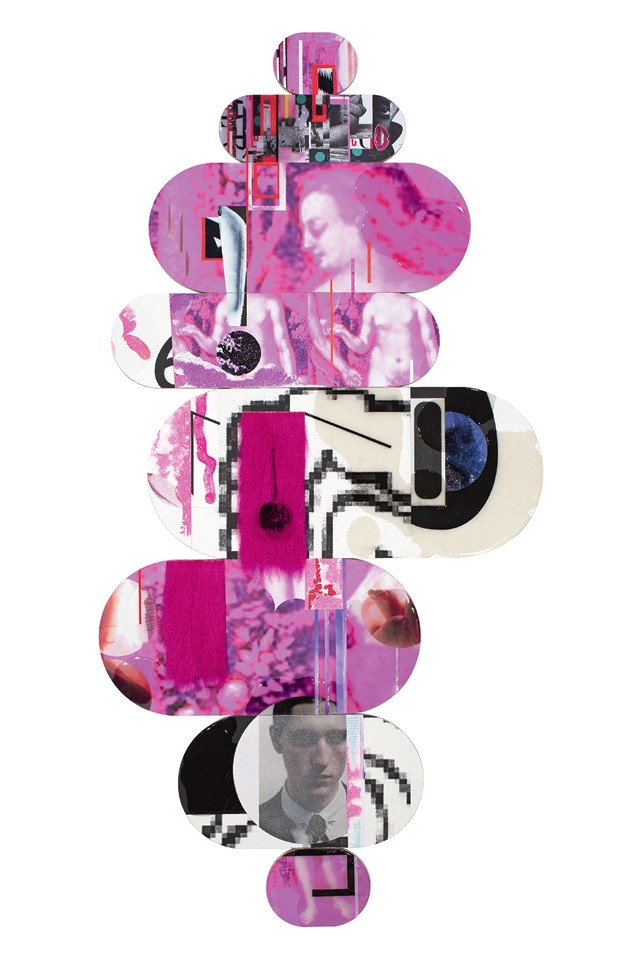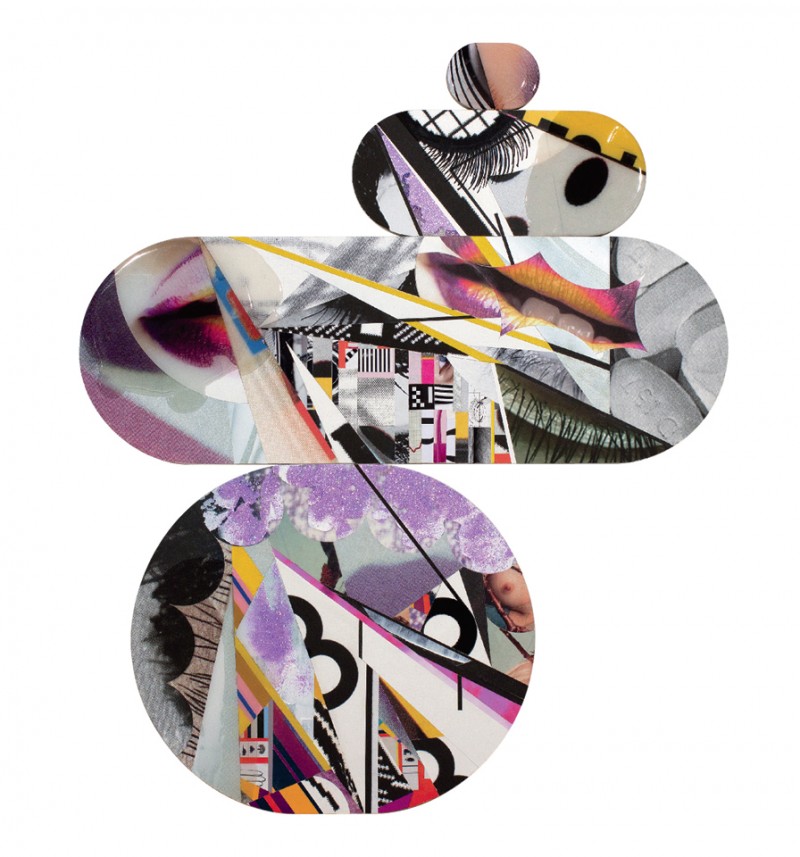Floating Identity
Alisa Henriquez admits that her relationship to collage was generated out of fear of a blank canvas. “It didn’t come from any conceptual position,” says the Michigan-based artist. “Putting things together by cutting and pasting was just a way of working that engaged me. I was always wanting something to respond to.” She began bringing material into her studio from the world around her and the result of her image importing, a series of mixed-media digital prints called “Floaters,” was exhibited at A.I.R. Gallery in Brooklyn in March of this year.
The advantage with the collage aesthetic is that it allowed her “to go back and forth between things that are more interior and sensual and pair them with things that come from popular or mediated culture. Because they are fragmented, they don’t put forth a singular view.” The more complex identity she is after incorporates both a physical and a sensual quality, and presents a structure that is almost architectural. “The idea for the ‘Floaters’ came from the work I was doing with the lozenge shape. I began thinking of them as totems. The stacking was a way of combining differing notions or layers of self.”
Henriquez leans towards the idea of combining things; her interest is in pairing a culturally conditioned understanding of images with a more personal understanding of their function, but in a non-hierarchical way. “In my research I found that totems aren’t hierarchical, which gave me permission to be much freer in my own arrangements.” She finds her images in popular and glamour culture from magazines and the Internet; they are preponderantly images of the sensual female form. Throughout the “Floaters” the viewer can see fragments of lips and eyes and hair.

Floaters No.1, 2015, digital prints, magazine images, acrylic paint, resin, glitter, fake fur, yarn on wood panel, 65.5 x 32.5 inches. All images courtesy the artist.

Floaters No. 6, 2015, digital prints, magazine images, acrylic paint, oil, resin, glitter, felt on wood panel, 58 x 25.5 inches.
The eyes are particularly arresting; the strategy here is to reclaim the gaze from the inside, looking out to the viewer. In “Floaters” No. 3 there is a brown eye and a sweep of eyelash; within a pop-paletted lozenge in No. 2, a pair of lips is suggestively turned on its side to suggest an altogether more intimate body part. This whole piece is a compendium of pink, a colour favoured by Henriquez. “Sometimes the pink is more fleshy and bodily; at other times, it’s pink in a pop way. Pink as girl.”

Floaters No. 4, 2015, digital prints, magazine images, acrylic paint, resin, glitter, vinyl on wood panel, 30.25 x 25.5 inches.
Henriquez’s digital prints show an awareness of a cluster of artists who have worked, or continue to work, inside the territory of collage. You can see hints of artists from James Rosenquist to Marilyn Minter, and from Lari Pittman to Mickalene Thomas in the “Floaters,” as well as in previous bodies of work. They are all artists who either show inflections of pop art or who depict the female body in fragmented form. The “Floaters” play with fragments and use shifts in scale, so some of the smaller pieces become very intricate and complex. As a result, there is no singular distance from which they are best read. “I want people to view them from a distance and then get closer to see all the little images that exist,” the artist says. “I want the scale-shifting to add to the complexity of the idea of identity.” ❚

